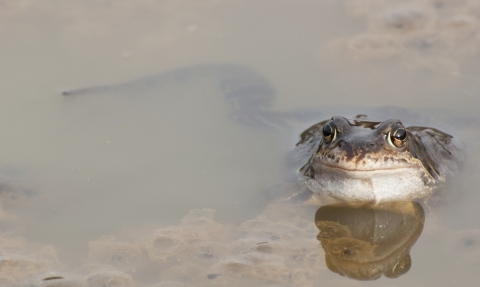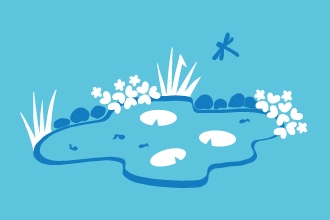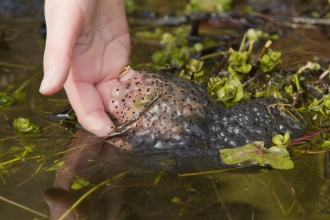
Katrina Martin/2020VISION
PondLife
Whether found in a garden or part of an agricultural landscape, ponds are oases of wildlife worth investigating.
Even small ponds can support a wealth of species and collectively, ponds play a key role in supporting freshwater wildlife.
A familiar feature of many field corners, village greens and gardens, ponds are generally small in size, ranging from one to twenty thousand square metres (or two hectares - about two thirds of the area of Buckingham Palace). Ponds are not connected to each other or to other water bodies – they are only fed by rainwater or groundwater.
One of the best ways of bringing more wildlife into an area, ponds can be very diverse, supporting similar aquatic plants to lakes, and even more large invertebrates than rivers. The best ponds for wildlife have shallow margins with a fringe of vegetation and nearby plant cover for amphibians and insects with terrestrial life stages.
Why is it like this?
Many ponds are artificial and were originally dug for marl (a lime-rich clay spread on fields to reduce acidity) or to provide a water source for livestock. Village ponds were often created for washing off working horses. Some ponds have formed in bomb craters from WWII while others are ornamental, or have been created specifically for wildlife.
Unmaintained, field ponds may only last around 100 years, as they gradually fill with silt - fine, sludgy mud that gets swept in by rain and settles at the bottom. Small ponds can be completely transformed in this way by a single spell of heavy rain. However, some natural ponds may be ancient: pools known as pingos were created when ice-hills, formed by trapped water freezing and expanding, eventually melted, leaving water-filled depressions; they may be up to 14,000 years old. Seasonally flooded depressions tend not to silt up (as the silt oxidises when dry).
There are thought to be around 500,000 ponds in Great Britain, plus around three million garden ponds. The largest number of pingos are found in Breckland in East Anglia.
What to look for
In early spring, look for glutinous masses of frog spawn, or strings of toad spawn, often in deeper water. Both common frog and smooth newt colonise garden ponds. Newts are best seen just after dusk in the early summer by scanning the pond margins with a torch – check also for Daubenton’s bat, sometimes seen skimming low over the surface at dusk.
Summer is the best time for pond-dipping – expect water beetles, diving beetles, water fleas, dragonfly nymphs, caddisfly larvae and aquatic snails. Look out for the translucent, primitive-looking fairy shrimp in seasonal pools a few weeks after they have re-filled, usually in autumn or winter. In acidic heathland ponds, look for the large raft spiders that sit on the water surface and can catch other invertebrates or even small fish.
Conservation
Many ponds have been drained or neglected and have filled with silt and vegetation or stagnated under fallen leaves. Some ponds become choked by alien invasive plants such as New Zealand pygmy weed, which is often unknowingly introduced by people emptying ponds or aquaria. Because they are small, ponds are particularly vulnerable to contamination by pollutants that run-off in rainwater from agricultural land and roads.
Recreational activities can also adversely affect ponds, such as allowing dogs to swim (which churns up the sediment), and feeding waterfowl (which can result in damagingly high populations and nutrient problems). Half a million ponds have been lost over the last 100 years and one in five remaining ponds are thought to be in poor condition. Initiatives are underway to try and restore lost ponds and create new ones that are not contaminated by alien plants or run-off.
How to Make a Mini Wildlife Pond (https://youtu.be/eFAfejQM-iw)
Credit: Joseph Reynolds/WTBBC

Katrina Martin/2020VISION


